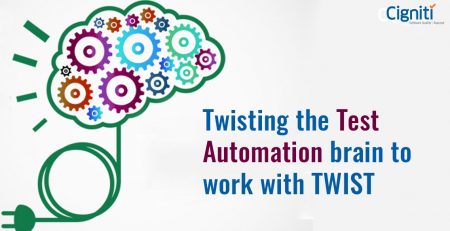4 Steps for a Rapid Test Automation Assessment
In today’s competitive business environment, enterprises and organizations need to assess the best way to implement test automation for their different projects. This has created an awareness regarding the value that automated software testing can bring.
A properly established test automation methodology brings in predictability, repeatability, and agility, and thereby drives software development to a higher degree of quality. Test Automation Assessment helps analyze whether or not an application needs to be automated. Based on certain criteria, recommendations are made that help decide whether an application really needs to be automated, and the benefits that may thus be achieved. Test automation assessment is usually performed either for clients with an existing test automation framework, or for clients with a need for a new test automation framework.
However, to consistently develop best quality applications, organizations need to continuously test the automation process. Rapid Test Automation Assessment (RTAA) is a commonly used approach that helps organizations test the process.
What is a Rapid Test Automation Assessment?
If the test automation assessment is to be completed within shorter timelines than the normal time frames, RTAA becomes a necessity.
RTAA refers to a fast analyses and implementation of a TAF that fits in a small environment, specifically created based on the criticality of the test cases.
4 Steps for a Rapid Test Automation Assessment
- Understand the Existing System: This involves assessing the current state of quality assurance and testing practices being followed. An initial understanding of the system, their technology, processes and testing information will be taken up as part of the assessment. An overall understanding of the system is known through understanding of the objectives, a know how of their technology stack is taken up, user flows will be identified, and analysis of the manual test cases if any will be taken up.
- Assessment: Usage of the tools and the extent of their automation readiness approach will be determined in this step. A requirement traceability matrix analysis is prepared that details the extent of test cases, business requirements, and details of the functional requirements and areas of quality improvement. Tool feasibility and confirmation along with automation ROI analysis is also taken up as part of the assessment approach. But most importantly, the top few of the most business-critical test cases are identified.
- Conduct a Proof of Concept (POC) to Validate Feasibility: This phase consists of implementing a TAF for the environment and executing only the selected critical test cases for conducting a POC. The POC will help identify financial and operational benefits and provide recommendations regarding the actual need for complete automation.
- Recommendation & Implementation: Specific test automation tools, automation feasibility, and automation approach will be clearly defined in this phase.
The key assessment focus areas are automation framework, automation integration and its fitment in the SDLC. In automation framework focus area, reusable function libraries, test object maps, exception, error handling etc. will be detailed. In the automation integration focus area, test management, source code repository, defect management, continuous build management etc. will be defined. In the fitment in SDLC focus area, details like existing /target automation coverage, metrics, test prioritization etc. will be detailed.
Outcome of the Rapid Test Automation Assessment
The outcome of this rapid test automation recommends appropriate automation strategies and executes them to enhance testing quality, reduce testing effort, schedule and ensure return on investments. An extensive report of the process, tools and people will be given. Predictions for effective project management, simple details on the response and need for continuous involvement with business teams and the need to absorb changes suggested by business will be defined. Implementation of tools to effectively track defects and a well defined test strategy document covering all aspects of testing needs will be provided.
Cigniti Technologies is an independent software testing service provider in the U.S, with more than a decade of experience. Cigniti’s team of automation testing experts designed test automation frameworks which consist of a huge library of keywords that helps you build your tests quickly and efficiently. Our tool agnostic test automation framework seamlessly integrates with leading commercial and open source tools. Contact Cigniti’s team of test automation experts today to know more about rapid test automation assessment as we have performed it for many of our clients.





Leave a Reply